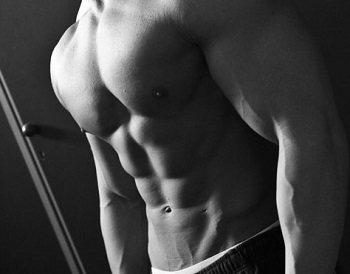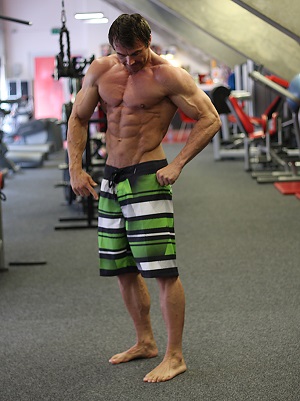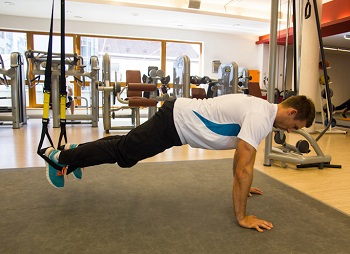We have already addressed this topic and its impact on the non-professional and professional public here . But what is really missing here? An article about a theoretical view of what it’s all about, how it works, and why we should really want it to work as it should.
Today, every “modern exerciser” already knows the term core, or if you want a body core, a deep stabilization system, the center of the body and the like.
What can you imagine under this term? When you ask the majority, and I certainly don’t want to say that everyone has to be an expert in anatomy, you get the answer that they are muscles, deep ones, and that their exercise is necessary and healthy. If you search even deeper, you will certainly see a few examples of perfect exercises that are precisely targeted to these muscles.
I really don’t mean it badly, but unfortunately most personal trainers, of whom you can already find hundreds in this field, don’t really know how it is with the body core. They may list your muscles, maybe they will know them in Latin, but what the point is and how to put it in context will be a bit of a problem.
I don’t want to bore you with Latin and technical expressions, which I won’t forgive in one paragraph anyway, so I’d like to first explain everything in a human way so that everyone can really imagine it – a non-expert who wants to know what the body core is and how Take advantage of this in your next exercise.
To motivate you to read a little, you need most of the core muscles to keep your abdomen beautifully flat, firm and just as powerful, and to help you with all other strength and performance disciplines.
Spatial orientation – simple, clear
In previous articles, I likened this group of muscles – the muscles of the body core – to an imaginary box, a box, a cylinder and all possible objects of a similar shape.
 This shape is very important, because it accurately describes in part the functionality of this complex. The fact that it forms a kind of packaging, a protective box for its contents. The important thing is that it always has all the walls functional, otherwise it just won’t work.
This shape is very important, because it accurately describes in part the functionality of this complex. The fact that it forms a kind of packaging, a protective box for its contents. The important thing is that it always has all the walls functional, otherwise it just won’t work.
The most common name is the center of the body, which can be a bit confusing in that people then wrongly include all sorts of other and superficial muscles, which only occur in the center, the center of gravity of the human body. However, this will completely overturn the whole meaning and functionality of this group, which we will explain in more detail.
There is probably no need to emphasize the importance of this system when one realizes what everything is in that box. Since it is the “cover” of the abdominal cavity, where most of the vital organs are stored, there is not much to talk about.
Another argument is the lumbar spine, which is also located in this locality, which is the most sensitive part of our axial support organ. Due to the fact that this is the lowest stored section, which carries the highest load, plus any manipulation of other external loads is multiplied, there are a number of risks and injuries associated with overloading and movement in general, but also with normal activities and vice versa with motor passivity, but this is mainly due to the absence of support for the muscles of the body core.
Anatomy, professional view, functional point of view
But in order not to speak only in general terms and not to liken this group to various geometric shapes, we will describe it a little more sophisticatedly and professionally.
We will describe the muscles that fit into the system, its beginnings and attachments, to find out which two localities are attracted to each other by their contraction, and their exact function.
Transverse abdominal muscle ( m. Transversus abdominis )
- beginning: 7. – 12. rib, fascia thoracolumbalis, crista iliaca, lig. inguinal
- úpon: linea alba, aponeurosis m. obliq. int., lig. inguinal
- function: torso – auxiliary rotation, abdominal press; breathing – exhalation
Internal oblique abdominal muscles ( obliquus internus abdominis )
- beginning: fascia thoracolumbalis, crista iliaca, lig. inguinal
- attachment: 10th – 12th rib, aponeur. m. obliq. int. + m. transv.
- function: torso – lateroflexion, rotation, abdominal press; breathing – exhalation
Midsection ( m. Diaphragma )
- beginning: spine, lig. arcuatum med., lig. arcuatum lat. / cartilage of ribs (7th – 12th) / processus xiphoideus of vagina of straight abdominal muscles
- úpon: center tendineum
- function: breathing – inhalation
Pelvic floor (diaphragma pelvis)
It is a group of dam muscle muscles:
- m. levator ani – m. iliococcygeus: arcus tendineus m. levatoris ani (from os pubis to spina ischiadica) / lig. anococcygeum, coccyx margin
- m. levator ani – m. pubococcygeus: outside the symphysis / lig. anococcygeum, coccyx, bilateral muscle
- m. coccygeus: lig. sacrospinal / lig. sacrospinal
- function: in general – flexible pelvic base, uterine support apparatus
Deep layer of spinal muscles (most often mentioned mm. Multifidi )
- beginning: processus transversus of the more caudal vertebra
- attachment: processus spinossus of more cranial vertebra (to a larger number of thorns)
- function: torso – dorsal flexion (two-sided), lateroflexion (on the bow side), auxiliary rotation (second side)
I understand that for many of you this section of the article was a Spanish village and after the first few Latin expressions you probably gave it up, but if you stayed here, which I firmly hope, we will put everything professionally back together in our simple jigsaw puzzle.
When we talked about the cylinder, box or box, we can precisely locate the individual muscles.
The lid of our box will support our diaphragm beautifully. The bottom will logically be the pelvic floor, and the remaining muscles remain for the entire walls – the aforementioned abdominal muscles – and at the back of the spine, the deep group of spinal muscles “perfectly” sews it.
Common reflexes, unexpected situations – core functionality
What is the main importance of this complex? What is this box for, anyway?
Organs
Whether passively or actively, this “packaging” protects our organs. By passive function I mean that it simply forms a layer, which in itself creates a shield to external influences – impacts, etc.
It also actively protects our organs by, when properly contracted, puts pressure on the abdominal cavity, thereby gripping it tightly, and makes sure that everything is in place, does not move anywhere, does not move into any of the holes. By its contraction, it also creates a higher pressure in the abdominal cavity, which has the same function and, in addition, helps digestion, the movement of food in the digestive tract.
Respiration
In themselves, representatives of this group are important for the breathing itself. We inhale with the help of the diaphragm and both abdominal muscles – transverse and internal oblique – help to exhale.
 Furthermore, due to the inhalation and descent of the diaphragm downwards, a significant pressure is placed on the abdominal cavity, again the function mentioned above must work – to keep everything important in place. Therefore, even when inhaling and contracting the diaphragm, the contractions of the pelvic floor muscles start automatically, and the other muscles of the core should also help.
Furthermore, due to the inhalation and descent of the diaphragm downwards, a significant pressure is placed on the abdominal cavity, again the function mentioned above must work – to keep everything important in place. Therefore, even when inhaling and contracting the diaphragm, the contractions of the pelvic floor muscles start automatically, and the other muscles of the core should also help.
Breathing itself is one of the basic and most effective ways to learn how to use the muscles of the body’s core properly and how to continue working with it.
External stresses, load, change of center of gravity of the body
The body core creates stability for other segments of the human body and is the basis of the kinematic chain of every movement. Simply put – if you decide to lift the barbell with your right hand, this complex must be strengthened so that the force itself is transferred to the arm and your body can handle the change of center of gravity and not fall like a house of cards. Unfortunately, this function is often replaced by superficial muscles in the majority of the population due to physical passivity, which unfortunately does not protect the important lumbar spine, for example, so the person risks a number of unpleasant injuries unnecessarily.
An important function associated with this is the ability to coordinate and balance, if the center of gravity is not firm, or waving your hands many times will not help and stability is gone.
Lumbar spine
As we have already mentioned, this is the most sensitive section with the statistically highest accident rate, most often a disc herniation.
Any external stress, especially change of position, tilt, forward tilt, bow, combined with an increased load, means a huge overload in this section.
Muscle activity increases both the pressure in the abdominal cavity, which itself, like the contracted muscles, creates active support for the spine and absorbs a substantial part of the overload. Everything is basically the same as such a weightlifting belt, just active, and this belt, if you have it well trained, you just can’t take it off and it will help you at any time.

